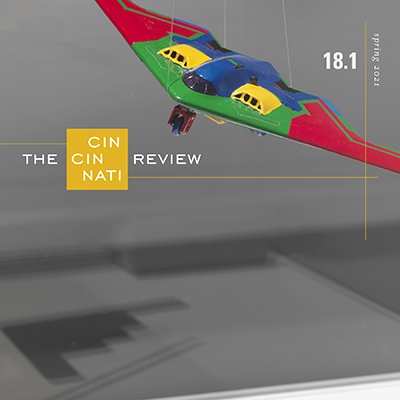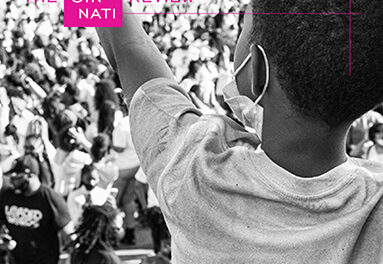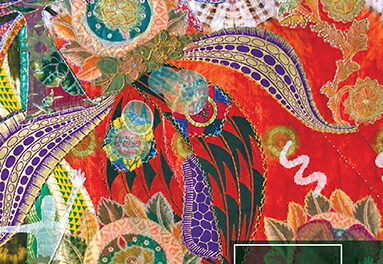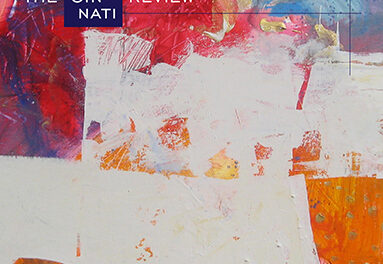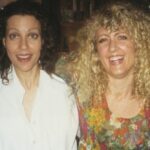We are pleased to share this review by Chip Livingston of Elissa Washuta’s White Magic (Tin House Books, 2021), which appeared in Issue 18.1 as part of a special multigenre review feature on art and activism (read the entire feature here):
At the beginning of a magic show, a magician often invites the audience to look closely, to watch the pattern of the moves, to discover the secrets to the tricks performed before their very eyes. The best memoirists provide a similar but distinct invitation to readers: let’s follow my movements, and we’ll discover the secrets and patterns together. The miracle of Elissa Washuta’s memoiristic, novelistic, and lyric collection of essays, White Magic, is that we witness the transformation of its author’s life as we journey through and map the book’s complex and original structure, and we find ourselves becoming enchanted along the labyrinthian way. We come away asking ourselves the same question as those in the master magician’s audience: How did she do that?
While witches cast spells through the intentional combination of patterns and elements, presenting their magic words and secret ingredients in a sequence specifically designed to influence a desired conclusion, the essayist, and perhaps especially the lyric essayist, must select the best representative moments from a lived and researched life and place her discoveries in an order that evokes narrative meaning, as well as curiosity, compassion, and shared humanity. Washuta presents a book of wonders, not only in its inquiries into her relationship to the supernatural—via underworld and other-worldish treks through nature and human behavior (abuse, addiction, trauma, rock ’n’ roll clubs, and D.A.R.E. videos)—but also for the wonderment of its exquisite composition; it is “crafted” in the best sense of that powerful verb.
And Washuta is acutely aware of the craft she is constructing; she writes in the short essay that prefaces White Magic’s Act II, “Dramatic structure seems most possible when story time is linear. In this book, time is folding, looping, told by a clock’s minute hand advancing and retreating. . . . This book is a narrative. It has an arc. But the tension is not in what happened when I lived it; it’s in what happened when I wrote it. Like I already told you, this is not just a recounted story; I am trying to make something happen and record the process and results.” Washuta allows the reader to witness her gathering of information, as well as the shaping of the text. In following her internet searches to solid and questionable sources, Washuta is forthright with her findings: “Looking for the facts, I go down the Google rabbit hole and end up at a website [about the death of Mark Twain.] . . . The source article has unintentional font changes and broken image links, so I have to wonder about it. There may be a fact-checked book in the library that would put an end to my speculation, but it’s cold outside and I’m curious right now and I’ve got this portal right here that can tell me anything I could want to know.” In direct addresses about the book’s construction and content like these, Washuta reveals her compositional strategies, as if daring the reader to call the book an act of magic, as if saying, “Look closer; this is how I’m doing it,” even as she sets us up for the next amazement.
She converses with the reader while questioning her own crafting: for example, in the book’s fourth footnote (another of its compositional strategies being multiple epigraphs, with footnotes, to nearly every essay), she posits: “When you don’t understand the meaning of something you read, whose fault is it? Yours or the writer’s? It has to be someone’s fault. Everything does. Anyway, I just ask because this is my book. Do you think I understand everything in this book? If I don’t, can you?”
Repeated quotes from Alice Notley and Louise Erdrich poems introduce various essays, but the accumulation of the repetition constructs another bridge. We might think of these and other quotations and forms of epigraph as Washuta’s magic words, along with varying tarot-card spreads, and footnotes that precede the longer essays. The whole combination produces a hypnotic reading experience. We become charmed by these incantations. But when the words of the spell are printed in black on white (and in white on black, in the case of this book’s captivating design), can there be any sleight of hand?
Washuta removes the veil of illusion by sharing the complex notations of her life—even as she leads the eye elsewhere, in the ways of the best magicians, abracadabraing us back to repeating chords and choruses, via a structure of rotating loops through time and her revolving worlds of influence: being a Cowlitz Indian woman in the twenty-first century, pop culture’s music videos, TV shows, video games, YouTube, nature, and literature, not to mention direct investigations into witchcraft and the extranatural.
Following a three-act arc with subtle and stunning segues and asides, Washuta eschews adherence to any strict regimen, whether that’s Freytag’s pyramid or the author’s own architectures. “Eight years ago, I began this book as a drawn line marked by plot points,” she writes in the untitled preface essay that follows Act III’s opening tarot-card spread and introduces the essay “My Heartbreak Workbook”:
I outlined a novel about a girl who turns into a shark. When I realized the girl was me, I drew a new line. . . . I wrote messes and disappeared them into hard drive folders. I downloaded articles about ghosts and intergenerational trauma. . . . I made a Google map of all the important places in these pages and saw points nearly on top of each other, ringing the Salish Sea: fictional worlds, filmed worlds, the spirit world from which a’yahos emerged, the world called “Seattle” I lived in from 2007 to 2017. I needed a better form than a story, an experiment, or a map. I needed to build a memory palace, a set of mental rooms filled with images, a route to travel through it. But the memory palace was outside me, in the land and the calendar, the seasons dragging through both.
The memory palace she constructs then has many rooms and even more doors, with portals, portages, and bridges being primary in the way the collection links and navigates the reader, and its author, into and out of various moments and realizations. She writes of dream doors, “doors at the bottom of the rabbit hole,” “doors in my mother,” doors to hell, cave doors, bedroom doors, the “door to the underworld,” and “down here, more doors,” “down here, a labyrinth,” “down here, not a door but a canoe” (subtitled sections from “The Spirit Corridor”).
For the sheer volume of information on magic and interpretations of witchcraft, not to mention the numerous historical and geographical corrections necessary to convey any real sense of the Native experience in North America, White Magic is encyclopedic in its breadth and scope. Yet the collection is so carefully curated that to follow the author down one rabbit hole or another, not knowing where we’ll emerge next, is part of the book’s wondrous adventure.
While these individual essays stand on their own as distinct, original creations, it’s the accumulation of these lyric essays, and how synchronistically Washuta’s touchstones collide, making greater sense through their metonymy, that builds up to the impressive finale. Throughout the book, we find abundant evidence of the dangers that disappear women, the choices that threatened to disappear Washuta, and the glimpses of magic and meaning that have brought her out of or helped her make sense of the underworlds. And in the book’s longest and penultimate essay, “The Spirit Cabinet,” the loops and sequences and mapping of preceding histories combine to provide a greater wisdom, or perception, of the previously charted territories.
Washuta quotes the 2006 film The Prestige, about competing nineteenth-century magicians, in “The Spirit Cabinet”: “The second act is called ‘the turn.’ . . . But you wouldn’t clap yet, because making something disappear isn’t enough. You have to bring it back. That’s why every magic trick has a third act. The hardest part. The part we call . . . ‘the prestige.’” Washuta then goes on to pull off the ultimate magic trick: she makes a disappearing Native woman reappear. This is no small feat given the horrific statistics of missing and murdered Native women in North America.
Is Washuta a magician? Is she a witch? A juggler? Yes. She’s a sorceress wielding many gifts. Is White Magic a book of essays, as its cover suggests? It’s a carnival. It’s a cabinet of curiosities, a book of essays, a memory palace, a memoir, and so much more. It defies the physics of our expectations. In magic, it’s said that there is always more than meets the eye. And in a good memoir, there is more than meets the I. Washuta has crafted a nonfiction masterpiece: an appearance act.
Chip Livingston is the author of two books of poetry, a novel, and a collection of stories and essays. His most recent work appears in Massachusetts Review, Juked, Fourteen Hills, and New American Writing. Chip teaches at the Institute of American Indian Arts and lives in Montevideo, Uruguay.

